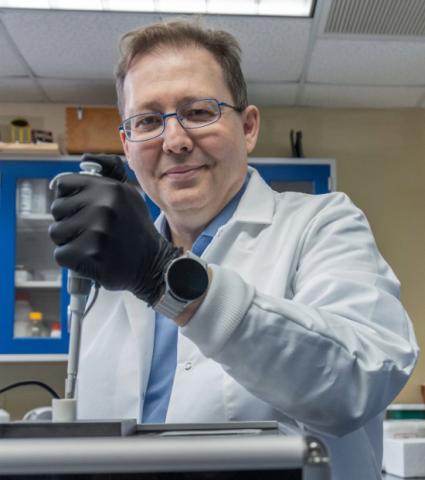Damir B. Khismatullin
Associate Professor of Biomedical Engineering

Office
Uptown: 523 Lindy Boggs Center
Downtown: 409 J. Bennett Johnston Building
Department of Biomedical Engineering
Tulane University
New Orleans, LA 70118
Lab Website
https://tulane.theopenscholar.com/cbb0ba
Courses Taught
Fall
BMEN 6060: Biomedical Acoustics
Spring
BMEN 3650/6650: Biomechanics and Biotransport
BMEN 3651/6651: Biomechanics & Biotransport Lab
Education & Affiliations
Biography
My research team conducts studies in two major areas: 1) Cellular Biomechanics and Biological Transport and 2) Biomedical Acoustics. In the first area, our focus is on myeloid, endothelial, and cancer cell biology. To figure out the etiology of atherosclerosis, cancer, and neurodegenerative diseases, we investigate phenotypic changes in human monocytes/macrophages, mast cells, cancer cells, and vascular endothelial cells exposed to various pathophysiological conditions. This work involves advanced microscopy techniques, flow cytometry, cytokine analysis, proteomic analysis, static and flow adhesion assays, cell migration assays, and deformability cytometry. In the second area, we investigate how living cells, tissues and biological polymers respond to mechanical stresses induced by acoustic waves. We explore the potential of focused ultrasound combined with chemical inhibitors of specific signaling pathways, the approach referred to as mechanochemical disruption, to induce cellular reprogramming. This research has several important applications such as nerve regeneration (e.g., in spinal cord injury and vision loss), cancer treatment, and tissue engineering. We also develop novel acoustics-based methods for material characterization and medical diagnostics. One of our patented technologies is acoustic tweezing rheometry in which material properties and their change during polymerization are measured using a small drop of material sample levitated in air. In this translational project, our current focus is on drop-of-blood coagulation analysis in patients with hemophilia and sickle cell disease, trauma patients, patients on anticoagulant therapy, and infectious disease patients.
Honors and Awards
NSF-NATO Postdoctoral Fellowship in Science and Engineering (2000-2001)
